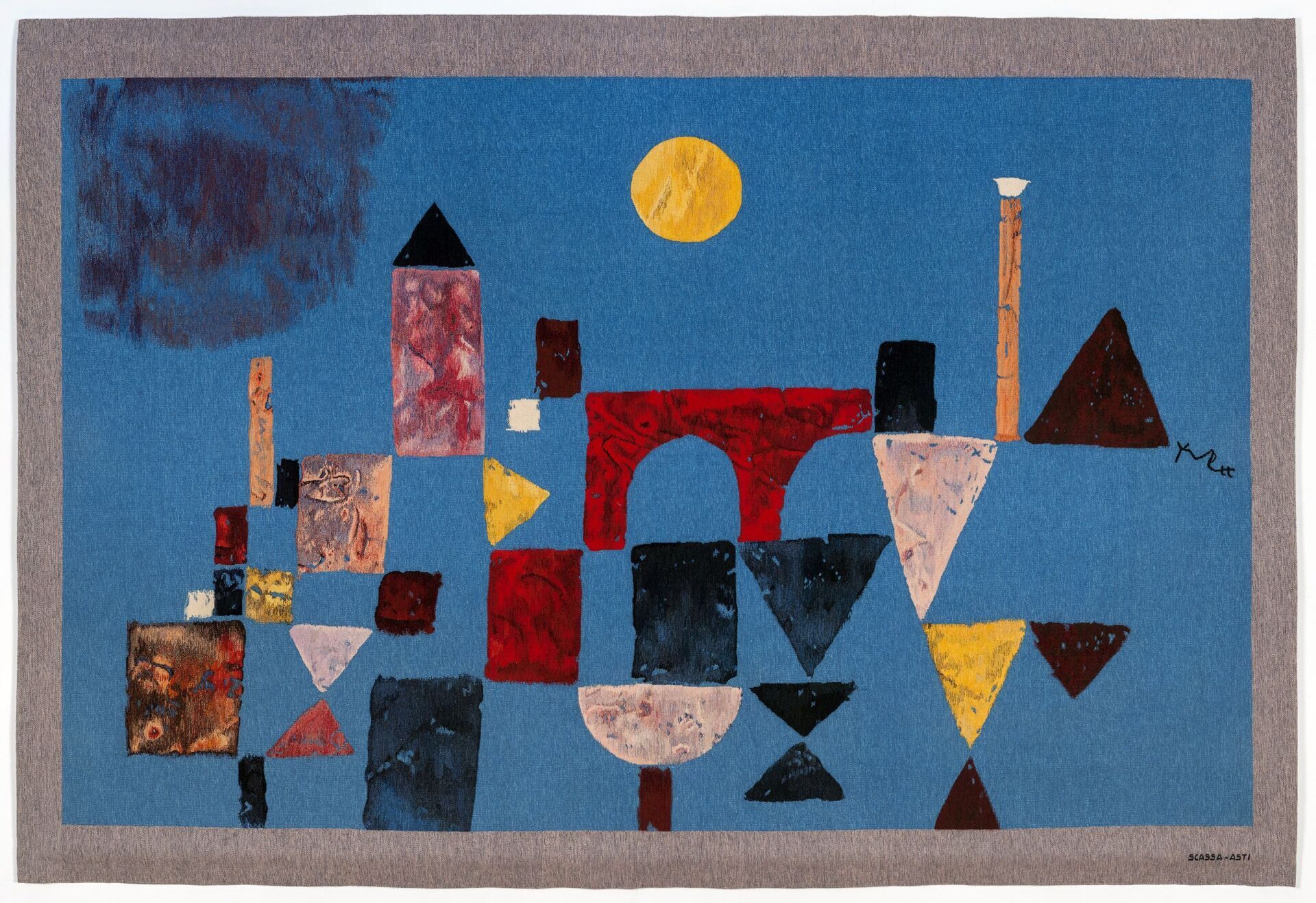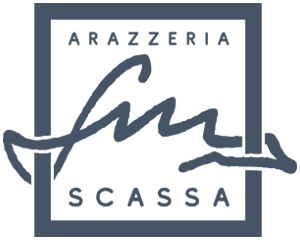Moving between Lucio Fontana and Paul Klee: a passion for the contemporary
Whatever led you here, do stick around. We have a story of courage, determination, art and marvellous coloured threads to share with you. This art adventure had its beginning in the heart of Piedmont, after 70 years of speaking to the world.
Silvana Cincotti, Art Historian

The Red Bridge, from Paul Klee, Arazzeria Scassa
In many ways, the road that leads the Arazzeria Scassa to modern art follows a natural pathway. At the age of 27, Ugo Scassa – founder of the Arazzeria – was working as a chartered surveyor, as a technical consultant to the Italian National Olympic Committee for the province of Asti and designer of the Asti municipal stadium on Via Foscolo, which was never built yet managed to win various awards.
When he was forced to leave his position due to health reasons, he tried to pass his subsequent stay in hospital dedicated to what he liked most: reading the magazine founded by Gio Ponti, Domus, a publication that you can still find on newsstands today. He also decided to sit the exams for a diploma in art and enrol in the Faculty of Architecture. At that time, being a chartered surveyor did not allow direct access to study architecture, hence it was necessary to obtain eligibility in advance by sitting the exams at an art-focused high school. Self-taught in all subjects, Ugo Scassa decided that for figure drawing, it would be better to turn to a painter friend,
Filippo Scroppo. At the time,
Filippo was assistant to Felice Casorati, attending his lessons at the Albertina Academy in Turin.
In touch with the cultural environment: knowing and undertaking
It was so that Scassa came into direct contact with a highly buzzing world, being the Turin art scene in the immediate post-war period. And it was all thanks to the mediation of Filippo Scroppo himself, as a member of the Turin MAC (Movimento Arte Concreta, or the Concrete Art Movement), who played an important role in elaborating the synthesis of arts, contributing significantly to attempt to break down the boundaries between the arts and techniques.
It was Scroppo who actually proposed that he and Scassa work together, convincing the latter to take over part of an art workshop, mainly dedicated to the production of carpets. It was the Redan factory in Pinerolo, managed by Signora Tron, who also owned what we now call the showroom in Turin, on Via Viotti (right in the city centre, near Piazza San Carlo to be exact), with an exhibition space furnished by the brilliant hand of the architect Ettore Sottsass Jr.
The production of hand-knotted Redan carpets was based on preparatory drawings, the so-called cartoons, signed by contemporary painters. However, it was not the carpet production that was struggling but rather the management of the exhibition space, which Signora Tron couldn’t oversee whilst trying to keep up with the rest of the work. She had thus turned to her friend in the hope of finding a buyer for the shop, thanks to his place in the artistic environment.
1956: Galleria Il Prisma is founded
Scroppo evidently made a few quick calculations and decided to go and see her in person, involving even the young Ugo Scassa in that trip, which would end up changing his life forever. The structure, the environment, the hint of potential and creativity excited the pair so much that they decided to take over the shop and transform it into an art gallery. The enthusiasm of both convinced Signora Tron not to sell the business entirely but rather to expand it with the addition of the two new partners. The year 1956 saw the official launch of the Galleria Il Prisma, inside of which paintings and sculptures were exhibited along with the personal exhibitions of Enrico Baj, Sandro Cerchi, Lucio Fontana, Arnaldo Pomodoro, Asger Jorn and Erich Keller.
As we said, it was a natural path, a process of gradual approaching through to complete identification. Ugo Scassa abandoned his career as a chartered surveyor in the midst of a full economic and construction boom, but would make his living in art. He would produce art. This was despite the strong disappointment of his father, Renato Scassa, employed at the Cassa di Risparmio di Asti, who would have preferred his son to have a position similar to his own, with a job in a bank. And we are faced with a story of disappointments between father and son that is all too common in the art world, so much so that it reminds us of the sorrow and regret of another parent, a certain Ludovico di Leonardo Buonarroti Simoni.
Who do we exhibit? Fontana!
A year later, in 1957, whilst organising the Lucio Fontana exhibition, Scassa and Scroppo went to the artist’s studio in Milan and, intent on choosing the artworks to be exhibited, were left alone to finish their selection, leaving with the concierge the keys to that space that would make any art curator happy today, wrapping the paintings in blankets, tying them firmly to the roof racks of their car before heading off to Turin with the first famous gashes by Fontana over their heads.
These exhibitions, these experiments if we want return to that era that was still delightfully open-minded, allowed Scassa to personally explore a world that had always fascinated him but which until then, he had only known through specialised magazines. This proximity to the world of contemporary art helped transform him into a perceptive man of art, assimilated and at ease in the cultural environment. In the gallery, Redan carpets and fabrics continued to be exhibited, based on drawings by Sottsass Jr., by
Andy Warhol
and other exponents of Avant-Garde Art, their great worth such as to be bought by the Olivetti, Agnesi, Agnelli and Rizzoli families.
Our path, however, has not even reached its starting point. In fact, it must be said that tapestry art at that time certainly did not occupy Scassa’s thoughts as he dealt with the preparation of exhibitions inside Il Prisma along with the administrative management of the gallery, moving in the direction of interior design and the realisation of furnishing items. We are at the beginning of that befitting experience that we call Made in Italy and which takes its first steps here, exploring the world of design.
Italia Disegno: knots, carpets and a future of art ahead
Meanwhile, the production of carpets continued in Signora Tron’s Pinerolo workshop. The items produced were welcomed by the market, yet a disagreement soured relations between Ugo Scassa and Signora Tron. Indeed, the latter seems to have had a strong artistic sense, a great technical ability but difficulties in entrepreneurial management and delays in the delivery of the works ended up frustrating the clientèle, resulting in requests gradually drying up. When Redan definitively closed in 1957, Scassa took over the business, gradually moving away from his involvement in the gallery.
It was at this time that Ugo Scassa decided to transfer the workshop to Asti, initially availing of only two looms, located first on Via Carducci and then Via Arrigo Boito. When the owner of the building on Via Boito had constructed the building, it had been designed to host a cinema, which never came to fruition. Thus, Ugo Scassa was able to utilise a large hall without any columns, having all the space necessary within for the production of carpets.
Yes, Ugo Scassa initially continued the creation of carpets, overcoming every obstacle that appeared before him, one of which was managing the personnel, never having had to deal with manpower before. But his courage in taking this step was bolstered by Signora Tron’s daughter, Lucietta, an expert in carpet manufacturing, who undertook to teach this new profession to the young women who had been selected and sent by the Employment Office.
Scassa intended to have Signora Tron continue with directing the laboratory and with the supervision but she made very few visits to Asti and an error in the realisation of a carpet commissioned by Elena Olivetti, Adriano’s sister, pushed Scassa to make the final decision. He definitively ceased their collaboration, choosing to continue on his own. The carpets produced in the Asti workshop would be under the name of Italia Disegno, under his supervision and with his unwavering dedication.
When the Pinerolo workshop closed, Signora Tron tried to continue production activities, attempting to start over with a small carpet production, availing of the few looms still in her possession, yet without achieving any notable results. After a while, she asked if Ugo Scassa would like to buy the rest of the equipment and so after taking over her part of the company, Scassa bought the remaining frames.
And so it was that a young chartered surveyor, who moved to Turin to realise his dream of becoming an architect, entered the world of art. Bringing his passion for the contemporary with him.



